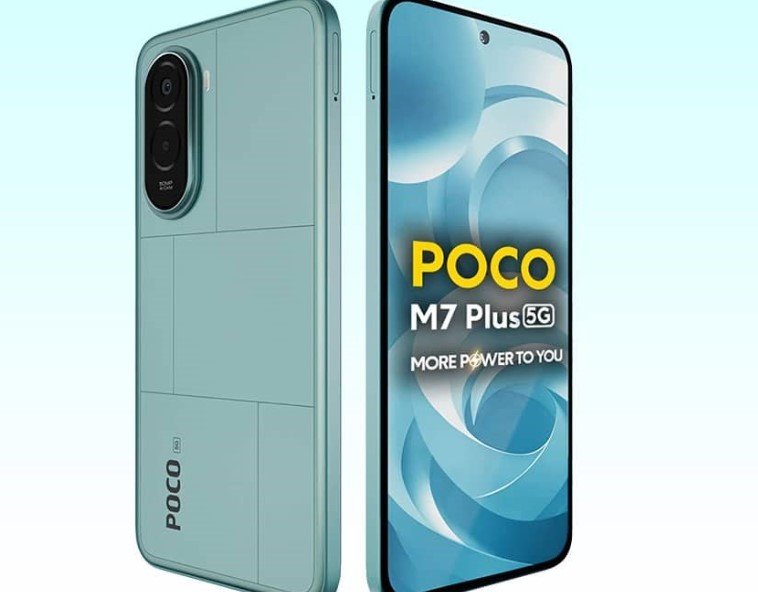India’s affordable phone scene just got more exciting with POCO’s latest entry challenging Vivo’s solid contender. Both the POCO M7 Plus 5G and Vivo T4x 5G promise big value under ₹17,000, but they pack different punches in specs and features.
If you’re hunting for a budget 5G phone this August 2025, these two could be on your radar. Let’s break down what sets them apart and which might fit your daily grind better.
Pricing Wars and How to Grab One
Prices can make or break a phone deal, right?
The POCO M7 Plus 5G kicks off at ₹13,999 for the base 6GB+128GB version, dropping to ₹12,999 with bank offers.
That’s tempting. The higher 8GB+128GB model is ₹14,999, also with a ₹1,000 discount for certain card users.
It’s hitting Flipkart shelves on August 19, and there’s an exchange bonus too.
Vivo’s T4x 5G starts a bit higher at ₹13,999 for the same config, but it goes up to ₹16,999 for 8GB+256GB.
You can snag it now from Flipkart or Vivo’s site.
Basically, POCO undercuts on entry price, but Vivo offers more storage options.
Think about your needs—do you hoard apps or photos? That extra space might sway you.
Screen and Build: Size vs Brightness Battle
Displays are where you spend most of your time staring, so this matters a lot.
POCO’s got a massive 6.9-inch Full HD+ screen with a zippy 144Hz refresh rate.
It’s certified for eye comfort by TÜV Rheinland, which is nice if you’re binge-watching late.
But Vivo counters with a 6.72-inch display peaking at 1050 nits brightness—handy in sunny outdoors.
Its 120Hz rate is smooth, though not as high as POCO’s.
Both have that eye protection cert.
Design-wise, POCO weighs in at 217g and 8.4mm thick, feeling substantial.
Vivo’s a tad lighter, but details vary by model.
Imagine scrolling through feeds on POCO’s bigger canvas—feels immersive, like a mini-tablet.
Vivo might win for one-handed use.
Which do you prefer, size or glare-busting brightness?
Here’s a quick spec snapshot in a table for clarity:
| Feature | POCO M7 Plus 5G | Vivo T4x 5G |
|---|---|---|
| Screen Size | 6.9 inches | 6.72 inches |
| Refresh Rate | 144Hz | 120Hz |
| Peak Brightness | Not specified | 1050 nits |
| Resolution | Full HD+ (2340×1080) | Full HD+ (2408×1080) |
That higher resolution on Vivo could mean sharper images, you know?

Under the Hood: Processors, Software, and Daily Grind
Powering these beasts—it’s all about the chips.
POCO relies on Qualcomm’s Snapdragon 6s Gen 3, which is essentially a rebranded Snapdragon 695 from yesteryear.
Paired with up to 8GB RAM, expandable to 16GB virtually, it handles multitasking fine.
Storage is 128GB across variants, with UFS 2.2 for decent speeds.
It ships with Android 15 and HyperOS 2.0, promising two major updates and four years of security patches.
That’s solid longevity for a budget phone.
Vivo, on the flip side, packs MediaTek’s Dimensity 7300, which benchmarks higher in some tests.
Up to 8GB RAM and 256GB storage in top trims—more room for your stuff.
Funtouch OS 15 brings cool AI perks like live text translation.
From what I’ve seen in reviews, Dimensity edges out in gaming, but Snapdragon feels snappier in apps.
POCO’s battery is a whopping 7000mAh with 33W charging—lasts forever.
Vivo’s got 6000mAh or so, but faster 44W charging in some models. Wait, actually, checking stats, Vivo T4x has 6000mAh with 44W.
Both support 5G, obviously.
If you’re a heavy user, POCO’s battery might be your hero.
Ever had your phone die mid-day? Annoying, isn’t it?
Camera Capabilities and Extra Perks
Cameras—everyone’s obsessed with them these days.
POCO M7 Plus boasts a 50MP main sensor with AI smarts, plus an 8MP selfie cam.
It’s got optical image stabilization? Wait, no, but it promises good low-light shots.
Vivo T4x steps up with a 50MP primary too, often paired with better processing for vibrant colors.
From user posts on X, Vivo’s camera gets praise for natural tones.
POCO might appeal to those who edit photos a lot.
Battery life ties in here—POCO’s 7000mAh means more shooting time without plugs.
Vivo offers IP64 dust and water resistance on both, actually.
POCO has it too, plus a side fingerprint scanner.
Other bits: POCO includes reverse charging at 18W—charge your earbuds on the go.
Vivo’s AI tools feel futuristic, like screen translation for travelers.
Wondering about real-world use?
- POCO shines in marathon sessions, like long commutes with videos.
- Vivo might be better for quick snaps and social media.
Both are IP64 rated, so splashes won’t kill them.
Audio? POCO has a single speaker, while Vivo might have dual—check that.
In the end, it’s about what bugs you less.
Price-wise, they’re neck and neck, but POCO’s massive battery could tip scales for power users.
Vivo’s software extras add polish.
Tough choice in this heated market.
